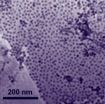(Press-News.org) Athens, Ga. – Ecologists in the University of Georgia Odum School of Ecology have found that evolutionary diversity can be an effective method for identifying hotspots of mammal biodiversity. In a paper published Oct. 17 in the journal Proceedings of the Royal Society B, they report that evolutionary diversity can be an effective proxy for both the sheer number of species as well as their characteristics and ecological roles. Their findings could help conservation organizations better protect threatened species across the globe.
There are several measures of biodiversity, including species richness—the number of species in a given area—and evolutionary diversity—how closely related the species in an area are to one another. A third measure, trait diversity, or the variation in biological and ecological characteristics across an area's species, is less commonly used but is potentially the most important in terms of conservation.
"Trait diversity is a key element when we think about biodiversity in terms of ecosystem resilience against perturbation or the stability of the system against sudden lethal events," said Shan Huang, a doctoral student in the Odum School and the study's lead author. "But trait diversity is very difficult to quantify at a scale that's meaningful for conservation prioritizing."
Decisions about which areas to conserve to protect threatened species typically have been based on species richness alone. Huang and her coauthors John Gittleman, dean of the Odum School, and Patrick Stephens, an assistant research scientist, wanted to determine whether there was any agreement between species richness, evolutionary diversity and trait diversity and, if so, whether one of the measures could serve as a good representative of all three—or, as Huang described it, a "silver bullet."
"That would make it a whole lot easier and cheaper and more straightforward to make decisions about where to conserve," Gittleman said.
The team first had to decide how to measure trait diversity in a meaningful way for conservation purposes. The most common method is known as trait variance, a straightforward mathematical measure of traits within communities.
"Imagine a community of mammals that consists of just two species—mouse and elephant," Stephens said. "If you just measure the difference between their body sizes, for instance, you could conclude that this was a very diverse community."
The researchers weren't satisfied that trait variance provided enough useful information about the roles species play in an ecosystem, so Stephens developed a new way of measuring trait diversity, calling it trait bin filling. A trait bin represents an order of magnitude of a particular trait.
"For example, body mass in terrestrial mammals spans eight orders of magnitude, from a mouse or a shrew being the smallest to an elephant being the largest," he said. "There are all sorts of things in the middle—deer, dogs, humans, etc. To tie it back to conservation, if you have two animal species that differ by an order of magnitude in body mass, you know they're doing very different things from each other ecologically."
Huang agreed. "Trait variance is not a very intuitive way to look at site biodiversity. But if you know how many bins are filled, it essentially tells you how many types of animals you have. It's very straightforward and easy to quantify."
Working with enormous databases—PanTHERIA, an online global compendium of biological and ecological information about all known living mammal species, and the IUCN mammal species database, which was initiated by their Global Mammal Assessment and includes all known mammals' geographic range and threat status—Huang and her colleagues analyzed and compared species richness, evolutionary diversity and trait diversity of terrestrial mammal communities across the world.
"Our ideal hypothesis was that all the measures would agree," Gittleman said. "Of course, ecology and conservation never work as cleanly as that."
The team found that while species richness and evolutionary diversity correlate very well, agreement with trait diversity depended upon whether it was measured in terms of variance or bin filling. In general, evolutionary diversity did a better job of predicting trait variance and roughly as well as species richness at predicting bin filling.
"The main point is that evolutionary diversity could be a reliable representative of biodiversity," Huang said. "In some cases, it's as good as species richness, in some cases better. Also, because it's based on molecular data, it's the measure of biodiversity that correlates with genetic diversity, so it's a meaningful surrogate."
There are practical reasons why this is good news for those interested in conserving threatened species. "With new molecular techniques, it's much easier, faster and cheaper to come up with an evolutionary tree than going out and counting species in the field," Gittleman said. "This is a sort of shortcut."
Huang cautioned that the correlation was stronger for some traits than others. "This might imply that the diversity of some traits is more influenced by contemporary ecological interactions and environmental conditions than by evolutionary history," she said, adding that further exploration was warranted.
"In terms of next steps, we need to know for which areas and species there is disagreement or incongruence," said Gittleman. "That may tell us about the biology and ecology of species distributions or something about the different levels of threat. And it may say something about the process of extinction itself."
###
The research was supported by the National Science Foundation and the Odum School, and the paper is available online at http://rspb.royalsocietypublishing.org/lookup/doi/10.1098/rspb.2012.1981.
Searching for a silver bullet: Measuring biodiversity to inform species conservation
2012-10-17
ELSE PRESS RELEASES FROM THIS DATE:
New cobalt-graphene catalyst could challenge platinum for use in fuel cells
2012-10-17
PROVIDENCE, R.I. [Brown University] — There's a new contender in the race to find an inexpensive alternative to platinum catalysts for use in hydrogen fuel cells.
Brown University chemist Shouheng Sun and his students have developed a new material — a graphene sheet covered by cobalt and cobalt-oxide nanoparticles — that can catalyze the oxygen reduction reaction nearly as well as platinum does and is substantially more durable.
The new material "has the best reduction performance of any nonplatinum catalyst," said Shaojun Guo, postdoctoral researcher in Sun's lab and ...
Beyond Bieber: Twitter improves student learning
2012-10-17
EAST LANSING, Mich. — Twitter, best known as the 140-character social-networking site where Justin Bieber and Lady Gaga chit-chat with fans, has become a new literary format that is improving student learning, a new study argues.
Christine Greenhow, assistant professor of education at Michigan State University, found that college students who tweet as part of their instruction are more engaged with the course content and with the teacher and other students, and have higher grades.
"Tweeting can be thought of as a new literary practice," said Greenhow, who also studies ...
Study questions feasibility of entire genome sequencing in minutes
2012-10-17
Amsterdam, October 17, 2012 – The claim that nanopore technology is on the verge of making DNA analysis so fast and cheap that a person's entire genome could be sequenced in just minutes and at a fraction of the cost of available commercial methods, has resulted in overwhelming academic, industrial, and global interest. But a review by Northeastern University physicist Meni Wanunu, published in a special issue on nanopore sequencing in Physics of Life Reviews, questions whether the remaining technical hurdles can be overcome to create a workable, easily produced commercial ...
World science academies release report to promote research integrity
2012-10-17
AMSTERDAM, Netherlands, and TRIESTE, Italy — To encourage researchers around the world to adhere to universal science values and ethical behavior, a new report on responsible science has been issued by the InterAcademy Council and the IAP – the global network of science academies. The report is the first product of the IAC and IAP's project on scientific integrity, initiated in response to several major trends reshaping the research enterprise, including the increasingly global and interdisciplinary nature of science, its heightened role in policy debates, and the continued ...
New technique for sorting live cells may expedite biomedical research
2012-10-17
Researchers from North Carolina State University and University of North Carolina at Chapel Hill have developed a new technique that uses sound waves to rapidly separate selected collections of cells for use in biomedical research.
"We think this is important because it will make it faster and easier for researchers to sort out the live cells they need for research ranging from disease study to drug development," says Dr. Xiaoning Jiang, an associate professor of mechanical and aerospace engineering and adjunct professor of biomedical engineering at NC State and co-author ...
Religious affiliation and residence in Muslim-majority nations influence sexual behavior
2012-10-17
WASHINGTON, DC, October 17, 2012 — Hindus and Muslims are less likely than Christians and Jews to have premarital sex, and Muslims are the least likely among people of these religious groups to have extramarital sex, according to a new study that analyzed data on premarital and extramarital sexual behaviors in over 30 developing countries around the world.
Co-authored by Amy Adamczyk, an Associate Professor of Sociology at John Jay College of Criminal Justice, and Brittany Hayes, a Ph.D. student in John Jay's Criminal Justice program, the study, "Religion and Sexual Behaviors: ...
Use of anti-psychotic drugs by people with dementia 'under reported'
2012-10-17
The scale of the challenge to reduce the use of anti-psychotic drugs by people with dementia may be under-estimated, according to researchers from Aston University and the University of East Anglia, working with NHS Kent and Medway.
There is a key public health challenge to reduce the prescribing of anti-psychotic drugs to people with dementia as they are thought to be associated with up to 1,800 deaths a year.
Ian Maidment, corresponding author and a Senior Lecturer in Clinical Pharmacy from Aston University has worked in medication management in dementia for 20 ...
In blown-down forests, a story of survival
2012-10-17
In newscasts after intense wind and ice storms, damaged trees stand out: snapped limbs, uprooted trunks, entire forests blown nearly flat.
In a storm's wake, landowners, municipalities and state agencies are faced with important financial and environmental decisions.
A study by Harvard University researchers, supported by the National Science Foundation (NSF) and published in the journal Ecology, yields a surprising result: when it comes to the health of forests, native plants and wildlife, the best management decision may be to do nothing.
Salvage logging is a ...
Moffitt Cancer Center researchers study 'ACT TIL' approach to treating metastatic melanoma
2012-10-17
Researchers at Moffitt Cancer Center have carried out a clinical trial in which patients with metastatic melanoma were given chemotherapy and an immunotherapy of adoptive cell transfer (ACT) with tumor infiltrating lymphocytes (TIL). Tumor tissues were surgically removed from patients, minced and grown in culture. The treatment combined chemotherapy, then ACT with TIL, followed by interleukin-2 (IL-2). The combination therapy drew a high response rate from some patients.
The study appears in the October issue of the Journal of Immunotherapy.
"Our purpose was to demonstrate ...
Calcium reveals connections between neurons
2012-10-17
CAMBRIDGE, MA -- A team led by MIT neuroscientists has developed a way to monitor how brain cells coordinate with each other to control specific behaviors, such as initiating movement or detecting an odor.
The researchers' new imaging technique, based on the detection of calcium ions in neurons, could help them map the brain circuits that perform such functions. It could also provide new insights into the origins of autism, obsessive-compulsive disorder and other psychiatric diseases, says Guoping Feng, senior author of a paper appearing in the Oct. 18 issue of the journal ...




